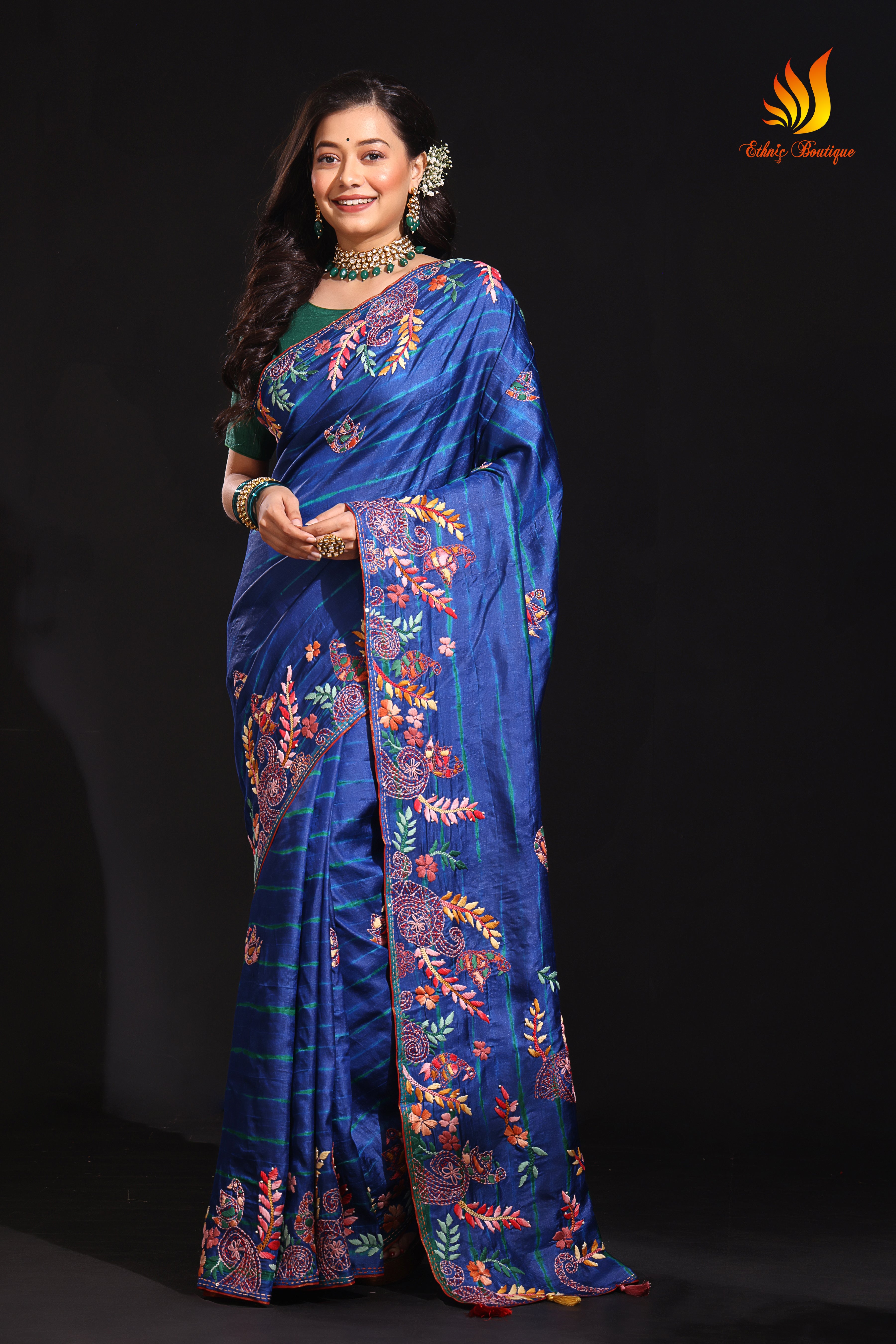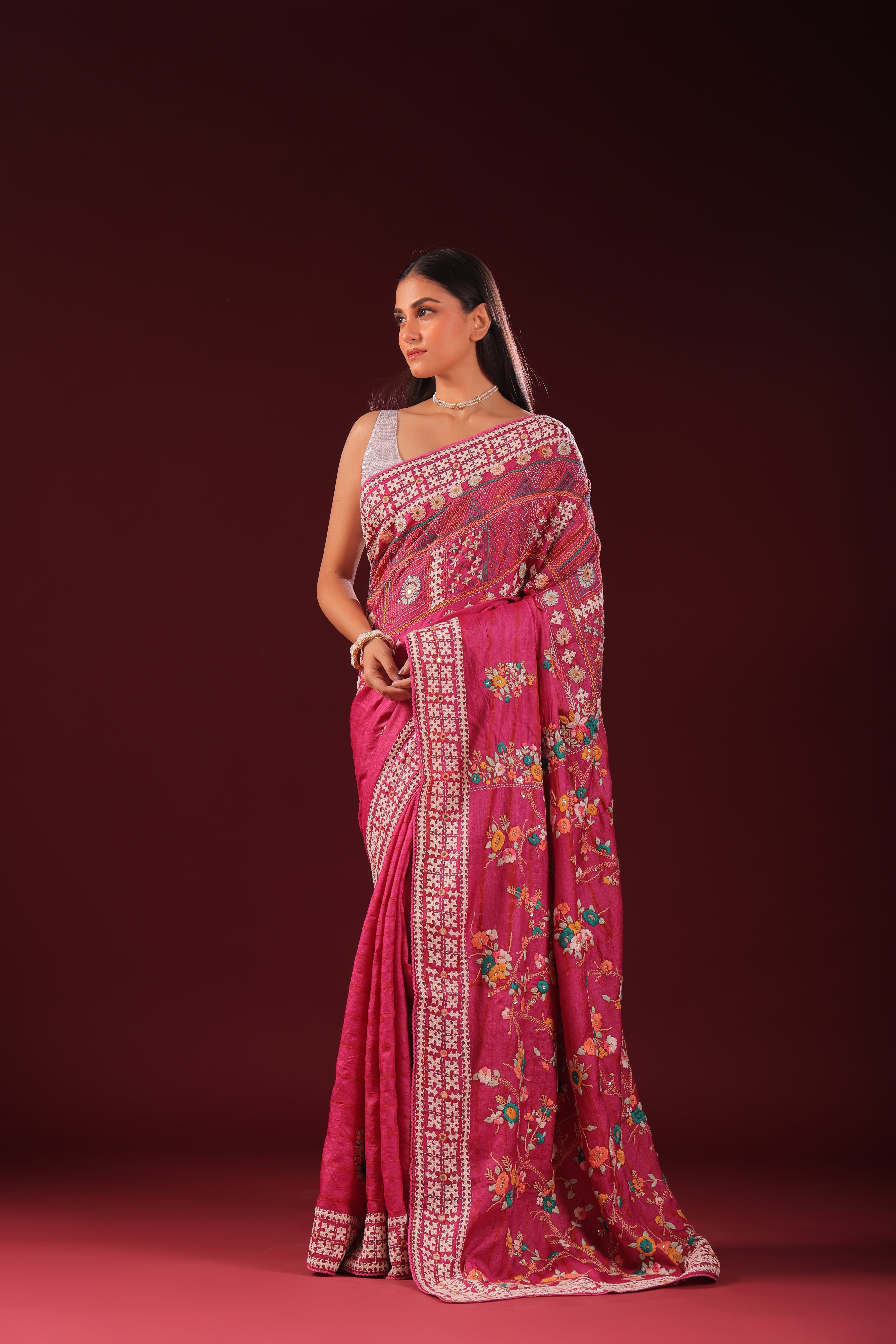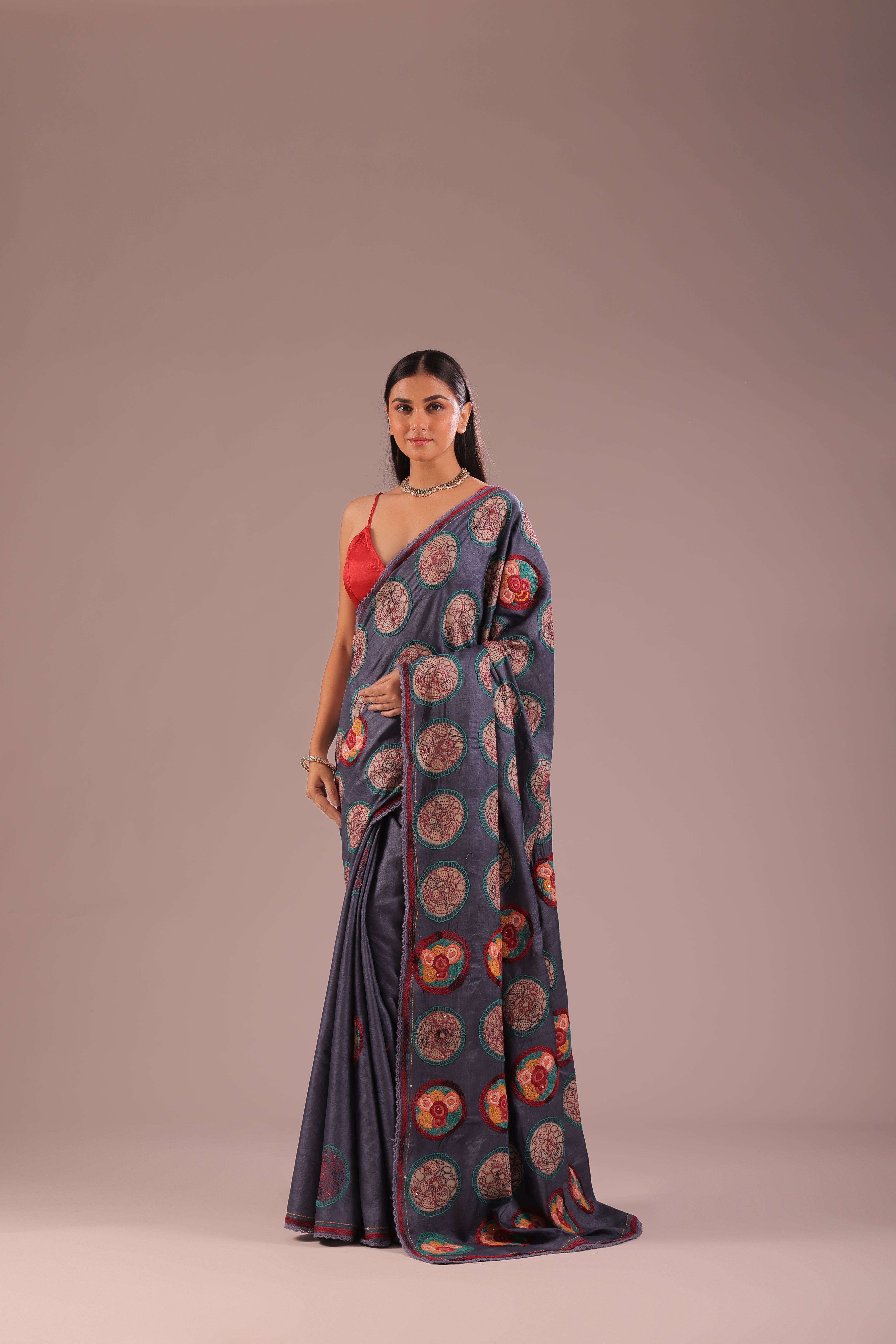Tussar Parsi Gujarati refers to a fusion of three rich textile traditions: Tussar silk, Parsi embroidery, and Gujarati weaving techniques. This combination results in beautiful, intricate, and luxurious fabrics, often used to create sarees, dupattas, and other garments. Let’s break down each of the components and how they come together in Tussar Parsi Gujarati textiles.
Key Features of Tussar Parsi Gujarati:
-
Tussar Silk:
-
Tussar silk, also known as Kosa silk, is a type of wild silk with a slightly coarser texture compared to mulberry silk. It has a natural golden hue and is known for its unique, matte finish, making it a popular choice for traditional textiles.
- Tussar silk is durable, breathable, and ideal for creating elegant garments like sarees, stoles, and scarves. The natural sheen of Tussar silk combined with its rustic texture gives garments a rich, earthy appearance.
-
Parsi Embroidery:
-
Parsi embroidery is a highly detailed and decorative form of needlework practiced by the Parsi community in India. It is known for its floral and geometric motifs, often worked using fine threads in vibrant colors, along with metallic zari threads for an added touch of luxury.
-
Boolean work (knot work) is also a part of Parsi embroidery, where intricate knotted designs are created to give texture to the fabric. This embroidery is typically done on the borders and pallu (the loose end) of sarees or other garments made from Tussar silk.
-
Gujarati Weaving Techniques:
- Gujarat is renowned for its textile heritage, and traditional Gujarati weaving methods such as Patola, Bandhani, and Ikat are often used in the creation of garments from Tussar silk.
-
Patola is a double-ikat weaving technique where intricate patterns are created by dyeing threads before weaving. This style is highly prized for its geometric and symmetrical designs, often seen on sarees and shawls.
-
Bandhani is a tie-dye technique where small knots are tied in the fabric before it is dyed, creating polka-dot or circular patterns. It can also be used on Tussar silk to create vibrant, colorful designs.
-
Mirror Work and Embroidery: Gujarati textiles are known for mirror work and metallic thread embroidery, which add a sparkling, festive element to the fabric.
-
Combination of Elements:
-
Tussar Parsi Gujarati textiles often feature a combination of Parsi embroidery with Gujarati weaving techniques on the rich Tussar silk fabric. The base of the fabric is made of Tussar silk, while traditional Gujarati weaving patterns (such as Patola or Bandhani) are woven into the textile.
- The Parsi embroidery adds a luxurious dimension with its detailed floral, geometric, and mirror-work patterns, often applied to the pallu, borders, or other sections of the garment.
Applications and Occasions:
-
Sarees: The most common use of Tussar Parsi Gujarati textiles is in the creation of sarees, where the Tussar silk provides a rich base for the intricate Gujarati weaving and Parsi embroidery. These sarees are often worn for special occasions like weddings, religious ceremonies, and festivals.
-
Dupattas and Shawls: This combination of Tussar silk, Parsi embroidery, and Gujarati weaving is also used to create dupattas and shawls, which are adorned with detailed motifs, vibrant colors, and metallic accents.
-
Lehengas and Kurtas: Tussar Parsi Gujarati fabrics are also used in the creation of traditional lehengas and kurtas, adding an elegant and festive touch.
Summary:
Tussar Parsi Gujarati textiles represent the fusion of Tussar silk, Parsi embroidery, and Gujarati weaving techniques, resulting in luxurious and intricately crafted garments. The combination of the natural golden hue of Tussar silk, the vibrant and detailed Parsi embroidery, and the rich, colorful patterns from Gujarati weaving makes these textiles highly prized for special occasions like weddings and cultural celebrations. These textiles are known for their elegance, texture, and cultural significance, blending the best of traditional Indian craftsmanship.















